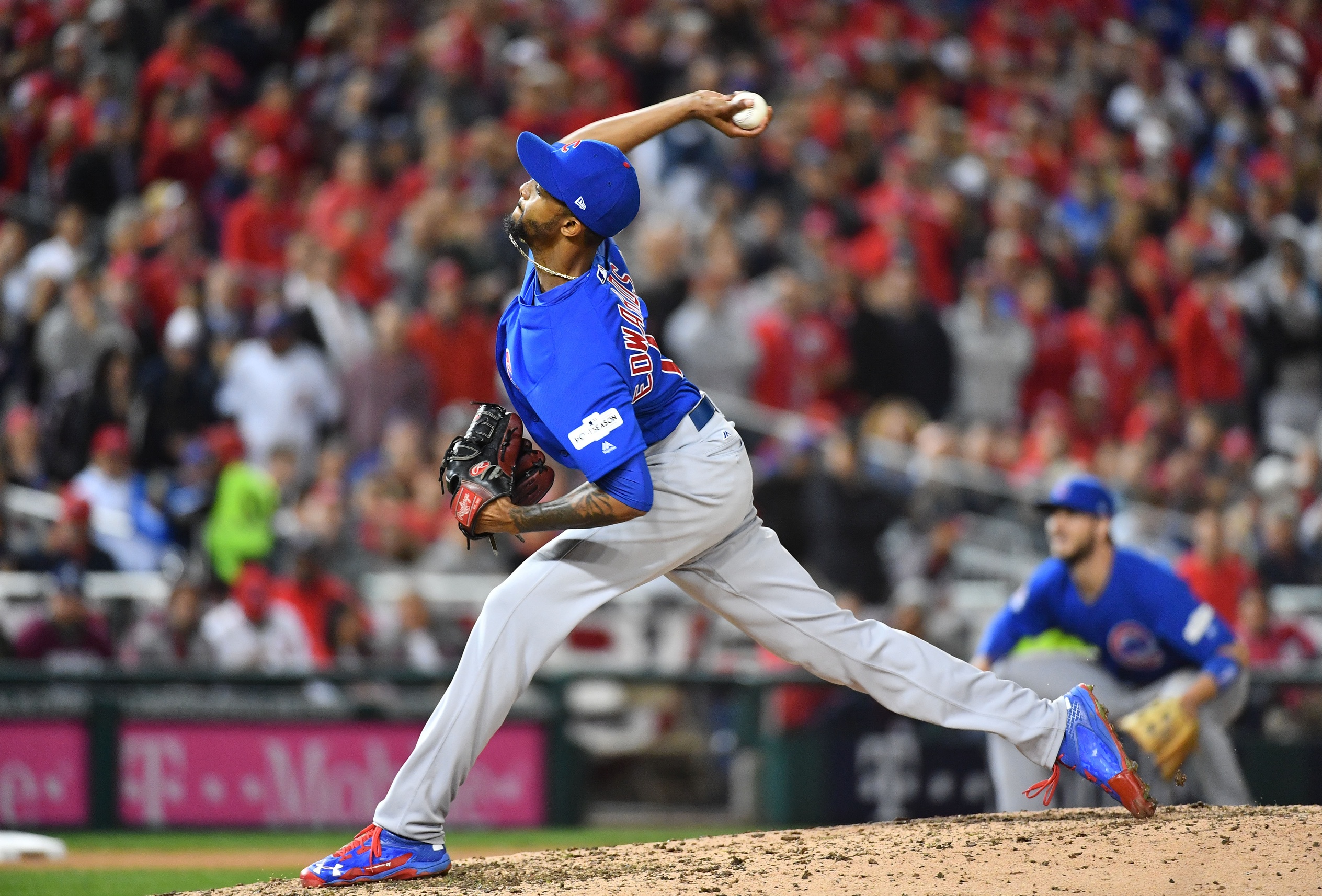Position
RP
2017 Stats
| IP | K% | BB% | HR/FB% | ERA | DRA | BABIP | GB% |
| 66 1/3 | 35.9% | 14.5% | 13.3% | 2.98 | 2.70 | .193 | 46% |
Year in Review
If you want the abridged version of Carl Edward’s Jr.’s season, look at the final two batters he faced. Edwards made Chris Taylor look silly, striking him out on three straight curveballs. Immediately before that, however, he walked Yu Darvish on four straight fastballs, despite Darvish looking more like he was trying to psyche someone out in Baseketball than trying to do anything related to baseball. In short, Edwards’ 2017 was excellent except when he couldn’t throw the ball over the strike zone, but such is life for Carl’s Jr. It’s no different from his 2016 or any season he spent in the minors. Edwards still strikes out over a third of the batters he faces, but boy, when he loses control, he loses it big time.
His meltdown in Game 3 of the NLCS was his highest profile collapse, and it actually prompted boos from the hometown crowd. Edwards didn’t get into either of the last two games. Maddon and some Cubs fans had lost confidence in him, but was it warranted?
Edwards had a pair of miserable stretches over the course of the season, not counting the postseason, but most of the Cubs were miserable in the postseason, so I’ll give him a pass on that one. His worst stretch came at the beginning of August which included three games where he gave up seven earned runs in 1 and 2/3 innings pitched. Aside from those games, a few in the middle of June and a few more here and there, he shut the door on the opposition.
Edwards made 73 appearances this year and going by Fangraph’s threshold based on WPA, he had 30 shutdowns, tied for 17th in the majors—but that also came with 13 meltdowns. Hector Rondon, who lost his job with the Cubs, had just six meltdowns. It’s a bit of an unfair comparison considering Rondon got into fewer high leverage situations and fewer games period. I also wouldn’t expect Edwards to match that mark again considering the only thing he did poorly was walk 5.16 batters per nine.
Out of the ten highest leverage situations he entered, he ended with a negative WPA just three times. Only 25 percent of his inherited runners scored, a respectable number. Edwards maintained a 2.70 DRA despite facing above average opposition (.268 TAv). His K/9 stayed right around his rookie mark of 13, only dropping to 12.8.
Generally, if his opponent makes contact, good things happen for the Cubs. This year, Edwards benefitted from a .193 BABIP even if his GB% dropped from 51 percent to 46. Batters made hard contact against him just 24 percent of the time. Edwards generally kept the ball in the yard, giving up six home runs over 66 and 1/3 innings, which is a number that could stand to be improved, but with the increased home run rates it’ll play.
Looking Ahead
Edwards will never be a control maven. I wouldn’t expect him to ever get under 3.5 BB/9. PECOTA’s (pre-2017) long-term forecast never has him below 4.3 BB/9. But there’s still plenty to like about him. His velocity has held steady in the mid-nineties, he strikes out a third of the batters he faces, he doesn’t have significant lefty/righty splits, and he’ll be under team control for the next few years.
He’ll be one of the few familiar faces returning to the bullpen with Hector Rondon not returning and Brian Duensing, Wade Davis, and Koji Uehara perhaps signing elsewhere or retiring. Out of him, Montgomery, and Strop, he’s probably the best, especially considering he will be just 26. He can fill a setup role well enough, but if he wants to be the guy Maddon will turn to in high leverage situations, he’ll need to keep the ball in the strike zone. Good things usually happen when he does.
Lead photo courtesy Geoff Burke—USA Today Sports
